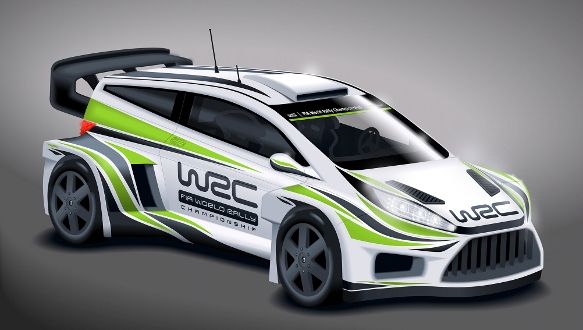Cars competing in the 2017 World Rally Championship->ke523 will be wider, lighter and more powerful, and have an all-around more aggressive appearance than the current cars. Sounds pretty good to us. While some specifics are still being hammered out between the FIA’s technical department and WRC manufacturers, the FIA World Motor Sports council made the decision to move forward with the new regulations on Friday in Mexico.
According to Autosport, the new regulations will allow the cars to produce 380 horsepower, up from the current 300 horsepower, thanks in part to a larger turbo restrictor, up from 34 mm to 36 mm. Boost pressure, meanwhile, will be limited to 2.5 bar. Other changes to the drivetrain will include the reintroduction of electronically controlled center differentials.
The increase in horsepower also comes with a sizable reduction in weight. The current cars have a minimum weight of 1,200 kg (a little over 2,654 pounds), but at 1,175 kg (about 2,590 pounds) the new ones will be 25 kg lighter.
On the outside, the new cars will be wider (from a current maximum of 1,820 mm to 1,875 mm), with more freedom for aerodynamic enhancements around the production-car body shell. Expect to see new aero devices on the front bumpers, including larger front splitters and dive planes, and larger rear wings. The wider fenders will also be allowed to have holes to reduce pressure within the wheel wells.
“There were three main objectives with these regulations; make the car spectacular, be mindful of costs, and maintain, if not increase safety,” said FIA Technical Director Bernard Niclot in a WRC press release. “The cars will be striking, there is no doubt about that, and there are small but always significant improvements in relation to safety.
Continue reading for the full story.
Why it matters
You might remember that 2017 will also see the return of Toyota->ke88 to the WRC with the 2015 Toyota Yaris WRC.->ke88 That’s no coincidence. The first season following a sweeping rules change is an opportune time for a new manufacturer to enter a racing series. Because the regulations are new for the incumbent manufacturers, including Volkswagen,->ke94 Ford->ke31 and Citroën,->ke22 all will start the 2017 development cycle on relatively even footing.
“We are excited about the challenge of coming back to the WRC,” said Toyota Gazoo Racing in a WRC press release. “By inviting Tommi Mäkinen for our WRC project, Toyota Gazoo Racing’s development structure has been even more strengthened. Under his leadership experience, the team will proceed with car-building based on 2017 regulations.”
While it’s probably not the second coming of the Group B beasts of the '80s, more power, less weight and more aerodynamics should translate to a serious increase in pace. The return of electronically controlled center differentials is significant as well. They were previously banned because of both their cost and their tendency to stabilize cars, which made them faster, but also reduced the frequency of sideways antics that brought out the fans.

